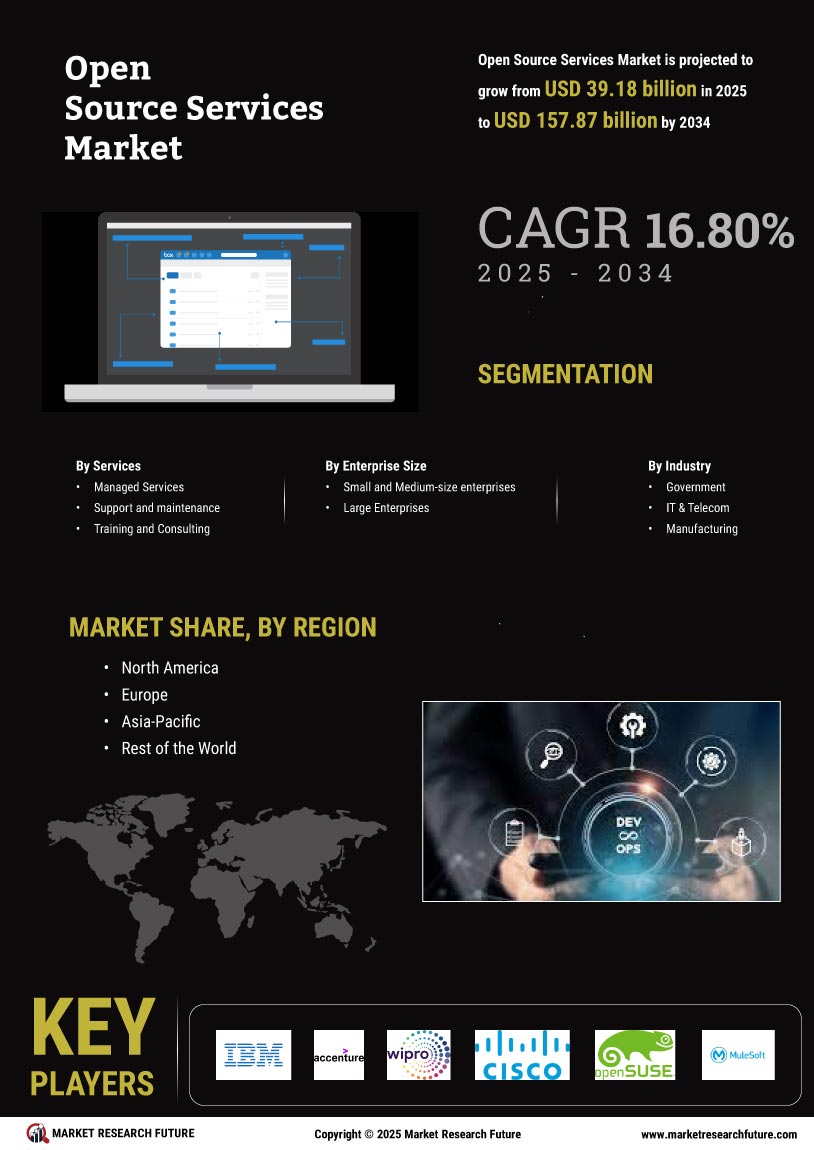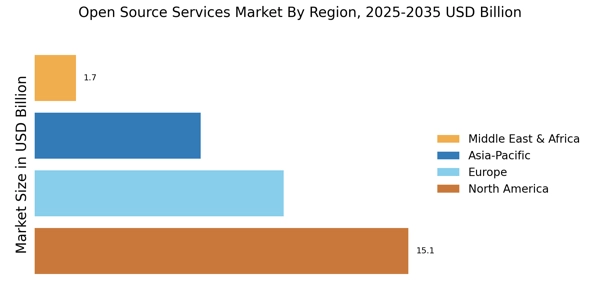The Open Source Services Market is currently characterized by a dynamic competitive landscape, driven by rapid technological advancements and an increasing demand for flexible, cost-effective solutions. Key players such as Red Hat (US), Canonical (GB), and SUSE (DE) are strategically positioned to leverage their extensive portfolios in cloud computing, containerization, and enterprise solutions. Red Hat (US) focuses on innovation through its Red Hat OpenShift platform, which enhances cloud-native application development. Canonical (GB) emphasizes partnerships, particularly with major cloud providers, to expand its Ubuntu ecosystem. Meanwhile, SUSE (DE) is concentrating on regional expansion, particularly in Europe, to capture a larger share of the enterprise market. Collectively, these strategies foster a competitive environment that encourages continuous improvement and adaptation to market needs.
The Open Source Services Market exhibits a moderately fragmented structure, with numerous players vying for market share. Key business tactics include localizing services to meet regional demands and optimizing supply chains to enhance efficiency. The influence of major companies is significant, as they not only set industry standards but also drive innovation through collaborative efforts and strategic alliances. This competitive structure allows for a diverse range of offerings, catering to various customer needs across different sectors.
In August 2025, Red Hat (US) announced a strategic partnership with a leading cloud provider to enhance its hybrid cloud capabilities. This collaboration is expected to streamline deployment processes and improve service delivery for enterprise clients, thereby solidifying Red Hat's position as a leader in the hybrid cloud space. The partnership underscores the importance of alliances in expanding market reach and enhancing service offerings in a competitive landscape.
In September 2025, Canonical (GB) launched a new version of its Ubuntu operating system, which includes advanced security features and improved performance for cloud environments. This release is particularly significant as it aligns with the growing emphasis on security in cloud computing. By continuously innovating its product offerings, Canonical aims to attract more enterprise customers, thereby strengthening its market position.
In July 2025, SUSE (DE) acquired a smaller open-source company specializing in AI-driven analytics tools. This acquisition is likely to enhance SUSE's capabilities in providing data-driven insights to its clients, reflecting a broader trend towards integrating AI into open-source solutions. Such strategic moves not only expand SUSE's product portfolio but also position it favorably against competitors in the analytics space.
As of October 2025, the Open Source Services Market is witnessing trends such as increased digitalization, a focus on sustainability, and the integration of AI technologies. Strategic alliances are becoming increasingly vital, as companies seek to combine strengths and resources to innovate and meet evolving customer demands. Looking ahead, competitive differentiation is expected to shift from traditional price-based competition to a focus on innovation, technological advancements, and supply chain reliability, as companies strive to deliver superior value in a rapidly changing market.


















Leave a Comment